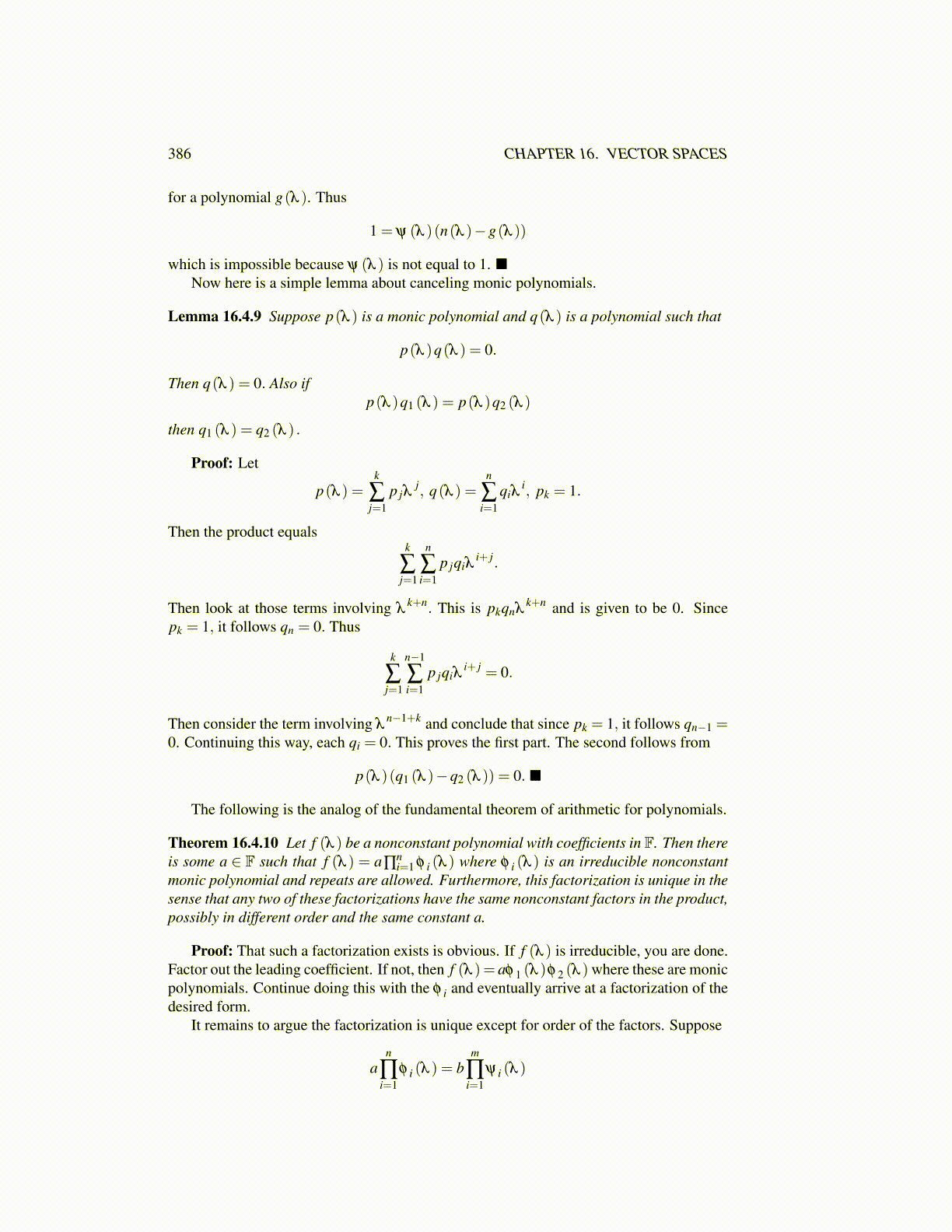
386 CHAPTER 16. VECTOR SPACES
for a polynomial g(λ ). Thus
1 = ψ (λ )(n(λ )−g(λ ))
which is impossible because ψ (λ ) is not equal to 1. ■Now here is a simple lemma about canceling monic polynomials.
Lemma 16.4.9 Suppose p(λ ) is a monic polynomial and q(λ ) is a polynomial such that
p(λ )q(λ ) = 0.
Then q(λ ) = 0. Also ifp(λ )q1 (λ ) = p(λ )q2 (λ )
then q1 (λ ) = q2 (λ ) .
Proof: Let
p(λ ) =k
∑j=1
p jλj, q(λ ) =
n
∑i=1
qiλi, pk = 1.
Then the product equalsk
∑j=1
n
∑i=1
p jqiλi+ j.
Then look at those terms involving λk+n. This is pkqnλ
k+n and is given to be 0. Sincepk = 1, it follows qn = 0. Thus
k
∑j=1
n−1
∑i=1
p jqiλi+ j = 0.
Then consider the term involving λn−1+k and conclude that since pk = 1, it follows qn−1 =
0. Continuing this way, each qi = 0. This proves the first part. The second follows from
p(λ )(q1 (λ )−q2 (λ )) = 0. ■
The following is the analog of the fundamental theorem of arithmetic for polynomials.
Theorem 16.4.10 Let f (λ ) be a nonconstant polynomial with coefficients in F. Then thereis some a ∈ F such that f (λ ) = a∏
ni=1 φ i (λ ) where φ i (λ ) is an irreducible nonconstant
monic polynomial and repeats are allowed. Furthermore, this factorization is unique in thesense that any two of these factorizations have the same nonconstant factors in the product,possibly in different order and the same constant a.
Proof: That such a factorization exists is obvious. If f (λ ) is irreducible, you are done.Factor out the leading coefficient. If not, then f (λ )= aφ 1 (λ )φ 2 (λ ) where these are monicpolynomials. Continue doing this with the φ i and eventually arrive at a factorization of thedesired form.
It remains to argue the factorization is unique except for order of the factors. Suppose
an
∏i=1
φ i (λ ) = bm
∏i=1
ψ i (λ )